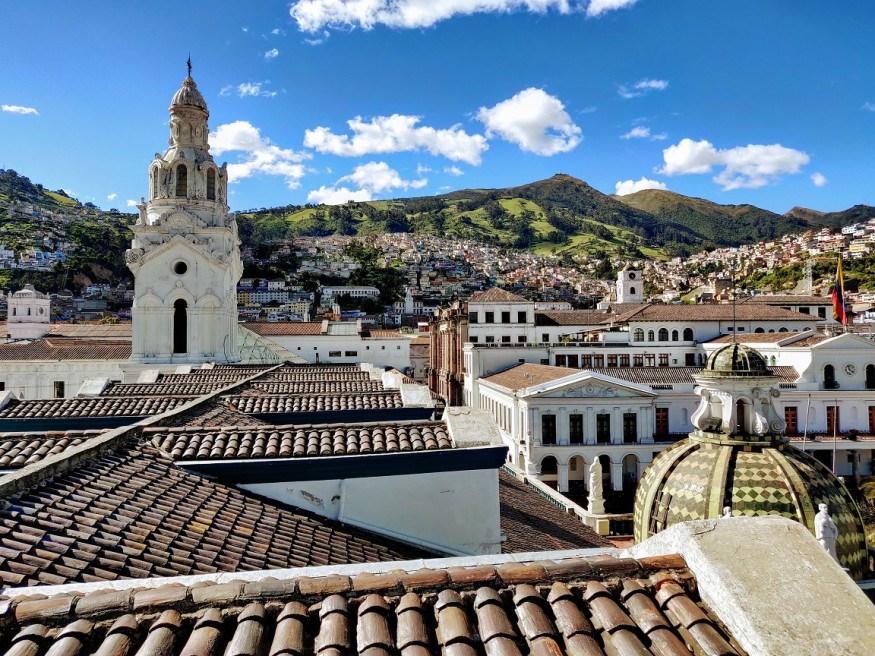Ecuador’s 22 Vernacular Architecture Projects by INPC Impact 130,000 Lives

Ecuador's Cultural Renaissance
Ecuador is going through a cultural renaissance because of 22 traditional vernacular architecture projects by the National Institute of Cultural Heritage (INPC). These initiatives, which put sustainability and innovation first, are estimated to benefit about 130,000 people in hundreds of communities. Both the preservation of existing community properties and the development of new ones have been made possible by the INPC's non-refundable $500,000 economic stimulus.
Vernacular or traditional architecture is an integral part of tangible cultural heritage, intertwining with the identity of collective and social groups. As part of Ecuador's commitment to preserving its rich cultural legacy, the INPC received 89 initiatives from 17 provinces and 38 cantons. These projects underwent rigorous evaluation, considering sustainability, innovation, and the preservation of buildings by applying traditional construction techniques rooted in community heritage.
Preserving Ecuador's Heritage
The progress of these projects, ranging from 70% to 100%, is already making a tangible impact. Among the completed projects is "Muyu Wasi" (House of Seeds), a learning center on the value of ancestral, native, and creole seeds. Situated in the Andean province of Imbabura, this project is a testament to the commitment to permaculture, food and cultural heritage preservation, and the architectural legacy of Indigenous communities.
In Cotopaxi's Pujili canton, the Shalalá community's handicrafts center has also reached completion. This project aims to strengthen unity and order within the community by using natural and local materials for construction. Simultaneously, it empowers community members as bearers of knowledge in sound environmental practices.
The Tiwino dissemination center, dedicated to the trade of traditional handicrafts, is another successfully concluded project. Located in the heart of the Amazon rainforest, the Tiwino Waorani community is preserving ancestral architecture and actively transferring knowledge to new generations. The project addresses the challenges of cultural oblivion and Westernization, focusing on preserving ceremonies, traditions, and ancestral wisdom.
The INPC's commitment to vernacular architecture reflects a broader initiative by the Ministry of Culture and Heritage to uphold public policies prioritizing cultural heritage preservation. By offering economic incentives for these projects, Ecuador recognizes the crucial role that traditional architecture plays in shaping the identity of communities.
With diverse projects underway, Ecuador's cultural landscape is witnessing a revival. From "Muyu Wasi," fostering knowledge about seeds, to the Shalalá community's handicrafts center promoting unity through sustainable construction, each project contributes to the vibrant tapestry of Ecuadorian heritage.
The Tiwino dissemination center in the Amazon rainforest not only stands as a physical structure but also symbolizes the resilience of the Tiwino Waorani community in preserving its ancestral culture. Facing the challenges of cultural erosion and westernization, this project becomes a beacon of hope, actively involving the community's elders to transfer invaluable knowledge to younger generations.
As these initiatives reach completion, Ecuador demonstrates a commitment to holistic cultural preservation. The projects focus on architectural heritage, integrate training activities, empower new generations, and incorporate gender approaches. The INPC's emphasis on sustainability, innovation, and the application of traditional construction techniques underscores Ecuador's dedication to a harmonious blend of heritage and progress.
The success of these projects, with progress ranging from 70% to 100%, serves as a testament to the collective effort to revitalize Ecuador's cultural legacy. The communities involved in these ventures are not just recipients but active participants, contributing to preserving their unique identity.
In conclusion, Ecuador's journey with vernacular architecture projects is a remarkable chapter in the ongoing narrative of cultural heritage preservation. As these endeavors unfold, the impact will extend beyond the physical structures, creating a legacy of cultural resilience and community empowerment. The 22 projects, each telling a unique story, collectively contribute to the rich tapestry that defines Ecuador's cultural identity, ensuring that it thrives for future generations.
From Digital Models to 3D-Printed Homes: Jaspreet Kaur Lall Explains How the Innovation Changes the Construction Industry

Future Belongs to Green Construction: Sampath Kumar Paspunoori Explains One of the Key Trends in the Construction Industry

Kamala Harris' Campaign Ad Uses Iconic Visuals from Carrie Mae Weems to Connect with Voters

Historic Ancient Roman Ruins in Baalbek Remain Strong After Israeli Air Strikes; Locals Seek Cultural Protection

4 Ways to Honor Departed Loved Ones in Your Home Design














